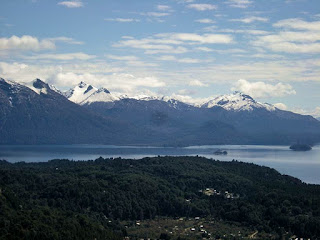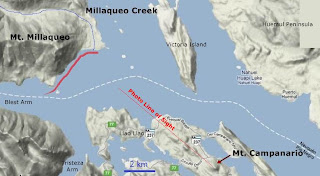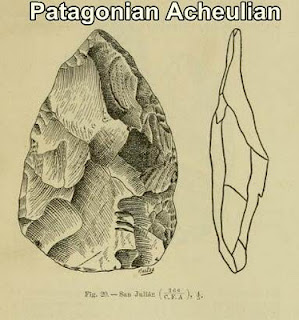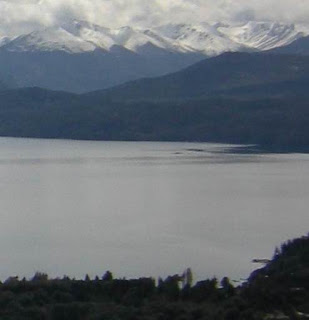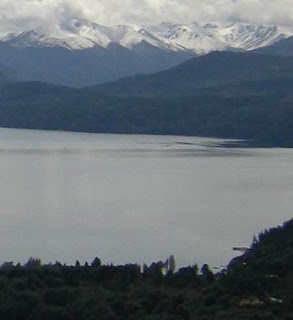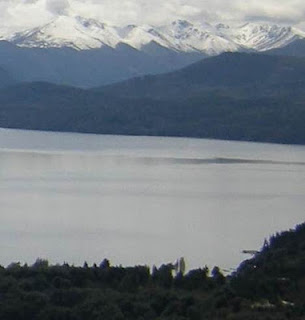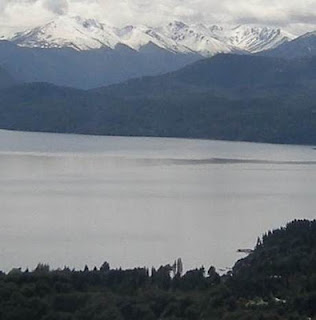In America there are (according to the orthodox point of view) no Neanderthals, and there have never been any either. Neanderthals are Eurasian creatures. Yet, Amerindians have very high frequencies of haplogroups that are allegedly Neanderthal; some are even higher than many Old World groups. Some examples: the X chromosome’s B006, HLA-A*02 and HLA-C*07:02 among others. How can this be?
Furthermore, modern humans,
Homo sapiens (HS) and Neanderthals (NH) do not share any mitochondrial DNA (mtDNA) , we do not have any (NH) Y chromosomes in our genome but we do carry other kinds of (NH) DNA.
Today's post will begin to explain these odd situations, but first lets brush up on our genetic knowledge:
DNA, mtDNA, X, Y, genes, haplogroups, SNPs and chromosomes
Nuclear DNA. Is the chemical structure that encodes the information needed to build a living creature. It is made up of a double helix of Deoxyribonucleic Acid (DNA) linked by four bases or nucleotides: adenine (abbreviated A), cytosine (C), guanine (G) and thymine (T). It is “nuclear” because it is found inside the nucleus of each cell in your body. It is inherited from both parents. These nucleotides (“DNA letters”) are arranged in “sequences”
Gene. It is a working subunit of DNA. Chunks of DNA (and RNA) that code a certain protein. There is a certain amount of reshuffling of genes in chromosomes.
Chromosome. The DNA molecules are packed, wound up, into minute structures known as chromosomes. Every cell in your body has two sets of chromosomes. You inherit one set from your mother and one set from your father. Each set has 23 chromosomes (total is 46). Of these, 22 are known as autosomes and 1 is a sex chromosome. Women have two X sex chromosomes, (XX) and men have an X and a Y sex chromosome (XY). The Y is transmitted from fathers to sons, who get their X sex chromosome from their moms. Girls get an X from each parent.
mtDNA, or Mitochondrial DNA is the specific DNA that small organelles called mitochondrion. These apparently were, eons ago, aerobic bacteria that established a symbiotic relationship with an anaerobic cell, taking up “food” inside the cell and providing it with energy. It lost its independent life, but retained its own DNA, which is not a double helix, but a circular shaped molecule. Although all cells in our bodies have mtDNA, you inherit yours from your mother, because it is her ovum or egg cell’s mitochondrion that passes on to you. Your dad’s sperm cells mitochondria remain outside the ovum, inside the flagellum (tail), and is discarded.
SNP , (pronounced “snip”), is a genetic variation in the DNA sequence in which one single nucleotide (i.e. A, T, C, or G) is modified and, kept through heredity. Let’s give an example: as you can see in the following three DNA sequences, there are variations in the second, fifth and ninth nucleotide. Each of these variations is a SNP, hence we name them SNP1, SNP2 and SNP3.
ACTTTGCTC Haplotype 1 C T C
ACTTAGCTT Haplotype 2 C A T
AATTTGCTC Haplotype 3 A T C
SNP1 SNP2 SNP3
Haplotype, is a set of linked SNPs on the same chromosome
Haplogroup : A group which contains all the direct descendants of a single person (man or woman) who had, and passed-on a specific genetic marker (i.e. SNP) or mutation.
Getting the Neanderthal genes into modern humans
How did we, modern humans get the Neanderthal genes into our chromosomes in the first place? Yes, I do believe that there was sex involved, but whom with whom? And what was the outcome?
We can imagine groups of HS and NH living in overlapping territories and coming together occasionally perhaps for trade or to exchange articles. We can also envisage violent encounters with males killing males and raping the females. A more “romantic” setting would have a “one-night-stand” tryst during a get together around a camp site bonfire. The fact is that modern human beings and Neanderthals mated and had viable offspring (that carried the genes of NH parents in their bodies and managed to pass them on to their descendants so that it is still there, within our genes).
Lack of NH mtDNA. Mitochondrial DNA is passed on from mother to child. So if there were any Neanderthal mtDNA in humans, it could only have come from an ancestral Neanderthal woman. To survive until our days, since mtDNA is only transmitted by females, a continuous line of mother-daughters (who’s original “mom” was a Neanderthal woman), would have to span the 30,000 years that separate the last living Neanderthals from us.
However no Neanderthal mtDNA is found in humans, a paper [3] states that:
they estimate the maximum amount of admixture possible to observe no surviving Neanderthal mtDNA to be less than 0.1%, with no more than 120 admixture events during 12,000 years of overlap.[3]
In other words, one sexual encounter between a modern human man and a Neanderthal woman every century. Not very high frequency is it?
Anyway, since nowadays there is no Neanderthal mtDNA in HS, we can conclude that mating between HS men and NH women (was as limited as indicated by [3] : once every hundred years) or, if more frequent, it did not lead to a continuous lineage of hybrid N/HS women.
Possible explanations: (besides the “once a century” mating ratio), perhaps these trysts between HS and NH were few and far apart, and their outcome could have been sterile or they died without issue, in any case, they did not manage to survive long enough to pass on their genes to the next generations. Or if they did, these “generations” died out along the way, and the NH mtDNA died with them.
Or, since babies are brought up by their mothers (picture it: a HS male rapes or seduces a NH female and goes his way, with his HS clan. She gets pregnant and father is gone. So she brings up her HS/N hybrid son or daughter within her Neanderthal tribe or culture. The hybrid lives and has children and grandchildren, but the NH mtDNA, will stay within the Neanderthal tribe and will eventually die out with all the other Neanderthals, when these became extinct.
A male HS and a female NH breeding would therefore produce an admixture:
- HS/N Hybrid boys: HS Y sex chromosome and NH X chromosome. NH mtDNA. Half of the autosomal DNA would be human, and the other half N.
- HS/N Hybrid girls: HS X sec chromosome from father. NH mtDNA from mother, half the autosomal DNA from each parent, and NH X chromosome from mother.
DNA, the nuclear stuff
On the other hand, if Neanderthal men got human women pregnant, they would not pass on any NH mtDNA (the children would have their human mom’s mtDNA). But, the Neander-Dad would pass on his nuclear DNA . So, Man (N) and Woman (HS) would be a viable route to get Neanderthal DNA into our
Homo sapiens cells.
This explains why we have Neander DNA (autosome chromosomes).
But there is more to it, we have not detected any Neanderthal Y (sex chromosome) in modern humans. A Man (N) would have passed his Y (N) chromosome to his sons, and they to theirs, forming a continuous lineage linking modern humans with NH Y chromosomes with their ancient NH relative 30 kya. So, why don’t we detect Y (N) in our modern humanDNA?
A 2006 paper found that the Neanderthal Y chromosome was “
substantially more different from human and chimp Y chromosomes than are other chromosomes. This suggests that little interbreeding occurred, at least among the more recent Neanderthal species”[1].
But, even if there was little interbreeding, their “Y” chromosome should be present in modern humans together with their autosome chromosomes (snippets of which are part of our genes).
Why are there no NH Y chromosomes in the human genome?
One option is that all the male descendants of the original Neanderthal fathers died out (and their hallmark Y chromosomes with them).
Another option is given by Haldane’s law [2] which states that:
“When in the offspring of two different animal species one sex is absent, rare or sterile, that sex is the heterozygous sex ”
Heterozygous sex meaning the offspring with two different sex chromosomes: XY, that is, the male. In plain english Haldane is saying that a male (N) and a female (HS) would have had more daughters than sons (boys would be rare). These few, if any (absent) boys would be carrying their Neanderthal father’s Y (N) chromosome and, they would be very probably sterile and therefore did not have children and could not pass on their Y chromosome to their sons.
The hybrid daughters on the other hand would be healthy girls (being homozygous, and having the same kind of sex chromosomes: XX). They would also have received half of their autosomal DNA and the NH X sex chromosome from their Neanderthal father and half of their autosomal DNA and their other X sex chromosome from their human mother, and, not being sterile, they would have passed them both on to their offspring . This is how we got the (N) autosomal DNA and the NH X sex chromosome into our genes.
Furthermore, the human mother would bring up her hybrid child within her HS group, which survived (well, most of them did) until today.
Summary
The only viable way of getting NH X sex chromosomes and their DNA sequences into our genes is if a HS woman and a NH man mated and had children. They would all have their mothers mtDNA and a 50/50 mix of NH and HS autosome chromosomes, their mom’s HS X chromosome and dad’s NH X chromosome.
The image below shows the possible outcome of a male NH and a female HS:
We represent the sex chromosomes XX for the women and XY for the men.
Regarding the original couple, in red are both NH chromosomes, a
Xn that he will pass on to his daughters, and a
Yn that will be inherited by his sons (who due to Haldane’s Rule will be few, absent or sterile), who won’t pass it on. The HS mom is shown as
X1 X2. All descendants from this admixture will have the HS mom’s mtDNA (represented by a pale blue square placed under her). The NH mtDNA (pink square under dad) is lost and not passed on.
All possible offspring of a Neanderthal - Homo Sapiens mating.
Copyright © 2011 by Austin Whittall
The two possible combinations of X chromosomes (NH and HS) are women. And both of these daughters carry mom’s mtDNA. They will marry HS spouses and pass on their mtDNA to all their children. As you can see, the females of the line (mother – daughter) will all carry the mtDNA of the first woman to mate with a Neanderthal. The boys on the other hand will have children but their mtDNA will be the one of their mothers (i.e. the orange square). Nevertheless, the
Xn has an equal probability of getting transmitted along to the next generations.
As this happened when Humans and Neanderthal met, the window of occurrence is the time both NH and HS overlapped in the same habitat, it is the most likely way for Neanderthal males to come upon modern human women. But Where?
Was it in the original Neanderthal territory in Europe? In the Middle East? In Southwestern Asia? In Altai? Or (assuming that Neanderthals migrated into America), in America?
In my post
Neanderthals in America some genetic proof I mentioned the B006 allele and O blood groups as a possible sign of Neanderthal presence in America. Are there other alleles belonging to Neanderthals and found in modern humans ( a sure sign of admixture)? Can we trace their source?
More markers of admixture, HLAs
A paper by Peter Parham [4] reports that a variety of Human leukoctyte antigens (HLAs) which help our immune system, such as the HLA-C*0702, quite common among Europeans and Asians but not found in Africa was also found in Neanderthal. The HLA-A*11 is shared by modern humans in Asia and... Denisovans, but it is nonexistent in Africa.
Parham suggests that HLA-C*0702 got into HS outside of Africa (hence its absence in Africa) by admixture with NH. And the same happened with HLA-A*11 (Denisovans bred with HS). As we were newcomers, these HLAs boosted our immune system to fight off illness (Denisovans and NH had evolved them over hundreds of thousands of years). Parham estimates that:
While only 6 per cent of the non-African modern human genome comes from other hominins, the share of HLAs acquired during interbreeding is much higher. Half of European HLA-A alleles come from other hominins, says Parham, and that figure rises to 72 per cent for people in China, and over 90 per cent for those in Papua New Guinea.[4]
The difference may be due to the hotter climate of the south having more diseases than the colder northern regions (i.e. Europe).
Where are these alleles found today: The maps below From [5] and [6] give a clear idea:
Some HLAs purportedly Neanderthal, found in modern humans: current distribution.
Maps From [5] and [6]
The post is getting long, but as you can see, the A*11 is very high in Papua New Guinea, China, South East Asia, and Southern Asia. C*07:02 is high in the same regions plus Scandinavia and
Very high in America.
Another paper by Abi-Rached [6], which we will delve in deeper in another post, comments about Neanderthal admixture as follows:
Thus, Neandertal admixture contributed B*07, B*51, C*07:02, and C*16:02-bearing haplotypes to modern humans, and was likely the sole source of these allele groups[6]
More in my next post...
Sources
[1] Rex Dalton, (2006).
Neanderthal DNA yields to genome foray. News. Nature 441, 260-261 (18 May 2006) | doi:10.1038/441260b.
[2] Haldane, J. B. S., (1922).
Sex-ratio and unisexual sterility in hybrid animals. J. Genet. 12:101-109
[3] Jason A Hodgson and Todd R Disotell, (2008)
No evidence of a Neanderthal contribution to modern human diversity, Genome Biology 2008, 9:206 doi:10.1186/gb-2008-9-2-206
[4] Peter Parham, (2011)
Primate-specific evolution of NK cell receptor recognition of MHC class I June 2011.
[5] Map source:
http://www.pypop.org/popdata/2008/byfreq-C.php
[6] Abi-Rached, et al. (2011).
The Shaping of Modern Human Immune Systems by Multiregional Admixture with Archaic Humans Science 25 August 2011: 1209202DOI:10.1126/science.1209202
Patagonian Monsters -
Cryptozoology, Myths & legends in Patagonia2011 International Year of Forests Copyright 2009-2011 by Austin Whittall ©



















